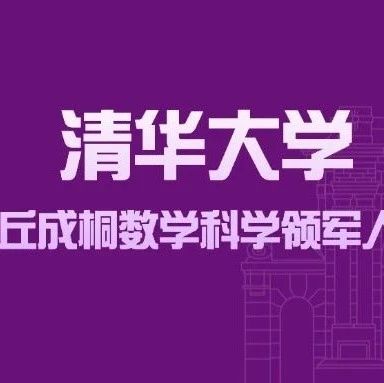文章目录[隐藏]
中文赛题:舍去还是保留,未来奥运会项目建模
国际奥林匹克委员会(IOC)正在筹备2032年澳大利亚布里斯班夏季奥运会。为使奥运会保持相关性和影响力,IOC致力于增加符合现代价值观且吸引全球观众的运动、分项或比赛(SDEs)。奥运历史上,为了反映时代变化,SDEs 时有增减。例如,2020年空手道、运动攀岩、冲浪和滑板首次成为奥运项目,但空手道未入选2024年巴黎奥运会,取而代之的是霹雳舞。展望2028年洛杉矶奥运会,美式橄榄球、长曲棍球和近海赛艇将被加入,棒球和垒球也将在缺席20年后重新回归。
为了指导这些决策,IOC的奥运项目委员会制定了一套标准以确保每项运动符合奥林匹克精神[1]。IOC列出的运动入选标准如下:
- 受欢迎度和可达性:提升奥运会的吸引力和全球关注度,同时不显著增加成本或后勤需求。
- 性别平等:确保男女运动员有平等的参赛机会。
- 可持续性:促进环境和社会责任。
- 包容性:代表多元文化,促进全球参与(至少有四大洲的75个国家在实践该运动)。
- 相关性与创新:吸引年轻观众,反映现代趋势,引入创新(如体感虚拟运动),同时尊重奥运传统。
- 安全与公平竞争:确保运动员保护和反兴奋剂的高标准。
IOC 雇佣了你们团队——HiMCM奥运顾问团队(HOC)来协助评估应在2032年夏季奥运会中加入(或可能移除)的 SDEs 。你的任务是创建一个数学模型,根据这些标准评估 SDEs ,以提供有依据的推荐。该模型将用于根据定量信息判断哪些 SDEs 最符合奥运会的发展愿景。
任务
- 根据 IOC 标准,列出并描述需要考虑的各种因素。注意这些因素可能是定量或定性、恒定或变量、确定性或概率性的。务必对选择的因素加以解释并在适当情况下附上单位。
- 使用确定的因素构建一个或多个模型,以帮助 IOC 评估哪些 SDEs 最符合奥运标准。
- 选择至少三个在2020年、 2024年和2028年奥运会中新增或移除的 SDEs,以及至少三个自1988年或更早以来持续存在的 SDEs,对模型进行测试。HiMCM 提供的奥运数据表(HiMCM_Olympic_Data.xlsx)包括自现代奥运会开始以来的项目、分项及赛事数据信息。选择多样化的 SDEs 来评估,讨论模型在不同 SDEs 上的适用性,验证其当前奥运地位。
- 识别三个可能在2032年布里斯班奥运会上新增或重新引入的 SDEs ,并确定优先推荐的顺序(第一、第二、第三)。此外,是否有潜力在2036年或更晚的奥运会上加入的 SDEs ?
- 评估模型的稳健性,分析在模型中使 SDEs 得分较高的因素,并讨论这些因素在决策工具中的优劣。
- 向 IOC 提交 1-2 页的总结信,通俗易懂地说明模型的理论依据及其对 SDEs 的评估结果。包括建议的新增或移除的 SDEs ,以及模型支持这些结论的理由。
你的PDF解决方案最多 25 页,包括:
- 一页的总结
- 目录
- 完整解决方案
- 1-2 页的 IOC 总结信
- 参考文献
- AI 使用报告(如使用,不计入 25 页限制)
注意:没有特定的最低页数要求,可以使用最多 25 页完成所有解决方案工作和任何附加信息(如图画、图表、计算、表格)。接受部分解决方案。允许谨慎使用生成式 AI 工具(如ChatGPT),但非必须使用。如使用生成式 AI,需遵循 COMAP 的 AI 使用政策,并将 AI 使用报告附加在 PDF 的最后部分,不计入 25 页限制。
HiMCM/MidMCM最新:在线提交流程
本文旨在帮助和指导参与 HiMCM/MidMCM 的学生和指导老师。COMAP 在文中提供了关于新的在线提交流程的信息,需使用新的在线提交页面(提交链接)。完成提交时,你需要准备好团队控制编号、指导老师ID和所选问题编号。
数据
HiMCM_Olympic_Data.xlsx - 包含当前和已取消的夏季奥运会项目数据集。
- 运动和分项:数据集中列出了夏季奥运会正式项目和已取消项目,按IOC使用的名称字母顺序排列。
- 代码:每个分项由 IOC 分配一个唯一的三字符标识代码。
- 体育管理机构:列出了与奥运项目相关的体育管理机构。
- 年份(1896 - 2028):每列的四位数字代表相关奥运会的年份。每个项目(或分项)在相应奥运会上举行的赛事数量标注在对应年份下;带“•”的项目为示范或非正式比赛。
术语表
- 确定性:指只有一个(预定)结果的过程。
- 国际奥林匹克委员会(IOC):是奥运会和奥林匹克运动的国际非政府体育管理机构,负责组织夏季和冬季奥运会。
- IOC奥运项目委员会:除其他职责外,负责分析夏季和冬季奥运会的项目安排。
- 体感虚拟运动:指结合物理活动和虚拟或数字元素的运动,通常通过增强现实(AR)、虚拟现实(VR)或电竞平台实现。这类运动将现实中的身体活动与虚拟场景或比赛相结合,例如 Zwift 骑行,选手使用配备速度和阻力传感器的动感单车在虚拟环境中骑行,与其他线上选手进行比赛。
- 概率性:基于概率理论或依赖随机性来预测未来事件的过程。
- 奥运会项目:IOC 为每届奥运会设立的所有运动比赛项目。
- SDE:运动(S)、分项(D)、赛事定义(E)
- 运动:IOC 定义的奥运会项目是由一个国际体育联合会(IF)管理的项目。一个运动项目可能包含一个或多个分项,每个分项有一个或多个赛事。
- 分项:一个运动项目的分支,包含一个或多个赛事。
- 赛事:一个分项下的比赛,结果会产生排名并颁奖(例如:奖牌)。项目、分项、赛事的关系示例(以2024年巴黎奥运会为例):
- 由世界游泳联合会(World Aquatics)管理。
- 水上运动包含多个分项——艺术游泳、跳水、马拉松游泳、游泳和水球。
- 例如,在跳水分项中包含八个奖牌赛事:
- 男子与女子3米跳板
- 男子与女子10米跳台
- 男子与女子同步3米跳板
- 男子与女子同步10米跳台
- 体育管理机构:负责监督和制裁某项运动的体育组织,具有不同的管理范围和纪律职能,包括处理违规行为及决定规则变更。国际体育联合会(IFs)是 IOC 认可的非政府国际组织,负责在全球范围内管理一项或多项运动。
免责声明
COMAP 是一个致力于提升数学教育的非营利组织,专注于提高学生的数学建模能力。本竞赛问题引用了国际奥林匹克委员会(IOC)的材料,用于教育和非商业用途,以丰富参赛者的学习体验。此内容并未获得 IOC 的认可或与 IOC 有任何关联。
Problem: To Play or not to Play: Modeling Future Olympic Games
The International Olympic Committee (IOC) is planning the 2032 Summer Olympics in Brisbane, Australia. As the Olympics evolve, the IOC aims to keep the Games both relevant and impactful by adding sports, disciplines, or events (SDEs) that resonate with modern values and appeal to a global audience. Throughout Olympic history, SDEs have been introduced, removed, or even reintroduced to reflect the times. For example, in 2020, Karate, Sport Climbing, Surfing, and Skateboarding made their Olympic debut. However, Karate was no longer included in the 2024 Paris Olympics, while Breaking (also known as breakdancing) was introduced. Looking forward to the 2028 Los Angeles Olympics, Flag Football, Lacrosse, and Coastal Rowing will be added, while Baseball and Softball will return to be contested in the 2028 Games after a 20-year absence.
To guide these decisions, the IOC’s Olympic Programme Commission has developed a set of criteria to help ensure that each sport aligns with Olympic values.[1] IOC Criteria for Sports Inclusion is summarized below:
- Popularity and Accessibility: Enhances the Olympic Games’ appeal and global interestwithout excessively increasing costs or logistical demands.
- Gender Equity: Ensures that both men and women athletes have equal opportunity toparticipate.
- Sustainability: Promotes environmental and social responsibility.
- Inclusivity: Represents diverse cultures and promotes global participation (at least 75countries across four continents practicing the sport).
- Relevance and Innovation: The sport must appeal to younger audiences, reflect moderntrends, and incorporate innovations including physical virtual sports where appropriatewhile respecting Olympic traditions.
- Safety and Fair Play: Maintains high standards for athlete protection and anti-doping.
The IOC has hired your team, HiMCM Olympic Consultants (HOC), to assist in evaluating which SDEs should be added (or potentially removed) from the 2032 Summer Games. Your task is to create a mathematical model that evaluates SDEs against these criteria to provide well-reasoned recommendations. This model will be used to make quantitatively informed decisions about which SDEs best fit the Olympics’evolving vision.
Your Tasks
- What factors need to be considered when addressing the IOC criteria? List and describe the various factors your team identifies. Note that factors may be quantitative or qualitative, constant or variable, and deterministic or probabilistic. Be sure to justify your choices and to include units where appropriate.
- Use your factors to build a model (or set of models) to help the IOC evaluate which SDEs align best with Olympic criteria.
- Test your model on at least three SDEs that have been added or removed from recent Olympics, namely Olympic years 2020, 2024, and 2028 and at least three SDEs that have continuously been in the Olympic programme since the 1988 games or earlier. The supplied data HiMCM_Olympic_Data.xlsx provides information about which sports and disciplines, and number of events, have appeared in each Olympics since their modern formation. Be sure to highlight the general applicability of your model by choosing a diverse collection of SDEs to evaluate. Discuss how your model affirms these SDEs’ current Olympic status.
- Identify three SDEs that could be new additions or reintroductions for the 2032 Olympics in Brisbane. Make sure to identify which SDE should be considered first, second and third for inclusion in the Brisbane games. Are there any SDEs that you believe have potential for inclusion in an Olympic games in 2036 or beyond?
- Perform sensitivity analysis to address the robustness of your model. Identify what aspects of your model make an SDE score well and discuss if these represent a strength or weakness of your model, especially in light of it being used as a decision-making tool.
- Draft a one- to two-page letter addressed to the IOC summarizing your findings in a non-technical way. Explain your model’s rationale and its results for the evaluated SDEs. Include your recommendations for which SDEs to add or remove and why your model supports these conclusions.
Your PDF solution of no more than 25 total pages should include:
- One-page Summary Sheet.
- Table of Contents.
- Your complete solution.
- One- to two-page IOC letter
- References list.
- AI Use Report (If used does not count toward the 25-page limit.)
Note: There is no specific required minimum page length for a complete HiMCM submission. You may use up to 25 total pages for all your solution work and any additional information you want to include (for example: drawings, diagrams, calculations, tables). Partial solutions are accepted. We permit the careful use of AI such as ChatGPT, although it is not necessary to create a solution to this problem. If you choose to utilize a generative AI, you must follow the COMAP AI use policy. This will result in an additional AI use report that you must add to the end of your PDF solution file and does not count toward the 25 total page limit for your solution.
NEW HiMCM/MidMCM: Online Submission Process The purpose of this article is to assist and guide students and advisors participating in HiMCM/MidMCM. In the article, COMAP, provides information about the new online submission process using the new online submission page https://forms.comap.org/242386224483964. You will need your team's control number, advisor id number and your problem choice to complete your submission.
Data
HiMCM_Olympic_Data.xlsx – Data set of current and discontinued summer program.
- Sport and Discipline: The sports (and disciplines) make up the current and discontinued Summer Olympic Games official program and are listed alphabetically according to the name used by the IOC.
- Code: Each discipline is marked with a unique 3-character identifier code by the IOC. Sports Governing Body: A listing of the sports governing bodies associated with Olympic sports.
- 1896 – 2028: The four number code in each column represents the year of the associated Olympic Games. Figures in each cell of the associated column indicate the number of events for each sport contested at the respective Games; a bullet (•) denotes that the sport was contested as a demonstration or unofficial sport.
Glossary
- Deterministic: processes that have only one (predetermined) outcome.
- International Olympic Committee (IOC): is the international, non-governmental, sports governing body of the Olympic Games and the Olympic Movement. The IOC is best known as the organization responsible for organizing the Summer and Winter Olympics.
- IOC’s Olympic Programme Commission: has, among other duties, the responsibility for analyzing the programmes for the Summer and Winter Olympic Games.
- Physical virtual sport: refers to a sport that integrates physical activity with virtual or digital elements, often through advanced technology like augmented reality (AR), virtual reality (VR), or esports platforms. These sports combine real-world physical exertion or skill with virtual settings or competitions, bridging traditional physical sports and digital interaction. One example of a physical virtual sport is Zwift cycling, where athletes use stationary bikes equipped with sensors to track their speed and resistance. The data is then streamed into a virtual environment where cyclists "ride" through various digital courses, competing with other participants online. This type of setup blends real physical cycling with a virtual competition, allowing for both athletic performance and digital engagement.
- Probabilistic: processes based on the theory of probability or that randomness plays a role in predicting future events.
- Programme: of the Olympic Games is the programme of all sports competitions established by the IOC for each edition of the Olympic Games.
- SDE: Sport, Discipline, or Event
- Sport: The IOC defines an Olympic sport as a discipline that is governed by a single international sports federation (IF). A single sport may contain one or more disciplines, each of which is the focus of one or more events.
- Discipline: A branch of a sport that includes one or more events.
- Event: A competition within a discipline that results in a ranking and awards (e.g. medals).Example of the relationship between sport, discipline, and event in the Olympic programme from the 2024 Paris Olympics:
- World Aquatics is the IF that governs the sport of aquatics
- Within the sport of aquatics are multiple disciplines – artistic swimming, diving, marathon swimming, swimming, and water polo.
- Within the discipline of diving are eight medal events:
- Individual 3m springboard - men & women
- Individual 10m platform - men & women
- Synchronized 3m springboard - men & women
- Synchronized 10m platform - men & women
- Sports governing body: A sports governing body is a sports organization that has a regulatory or sanctioning function. Sports governing bodies come in various forms and have a variety of regulatory functions, including disciplinary action for rule infractions and deciding on rule changes in the sport that they govern. Governing bodies have different scopes. They may cover a range of sports at an internationally acceptable level. An example of a sports governing body is an International Federation. International Sports Federations (IFs): are international non-governmental organizations recognized by the (IOC) as administering one or more sports at the world level. Recognized IFs must ensure that their statutes, practice and activities conform with the Olympic Charter, ultimately, they are responsible for the integrity of their sport on the international level.
Disclaimer
COMAP is a non-profit organization dedicated to improving mathematics education with an emphasis on increasing student proficiency in mathematical modeling. This contest problem references material from the International Olympic Committee (IOC). We acknowledge and respect the IOC’s ownership of this material, and it is used here solely for educational, non-commercial purposes to enrich learning experiences for participants. This content is not endorsed by or affiliated with the IOC.
Reference
[1]
Factsheet: The programme of the Games of the Olympiad. DInternational Olympic Committee, 2024: https://stillmed.olympics.com/media/Documents/Olympic-Games/Factsheets/The-programme-of-the-Games-of-the-Olympiad.pdf












